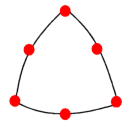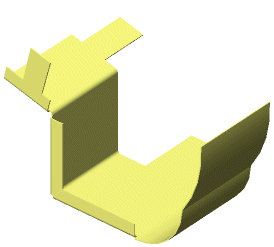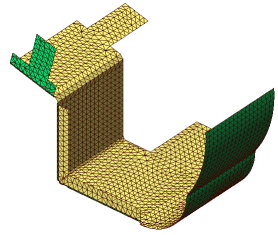Shell Mesh
When using shell elements, the software generates one of the following
types of elements depending on the active meshing options for the study.:
A linear triangular shell element is defined by three corner nodes connected
by three straight edges. A parabolic triangular element is defined by
three corner nodes, three mid-side nodes, and three parabolic edges. For
studies using sheet metals, the thickness of the shells is automatically
extracted from the geometry of the model.
To set the desired option for a study, right-click the Mesh
icon, select Create Mesh, and
expand Advanced.
Shell elements are 2D elements capable of resisting membrane and bending
loads.
|

|

|
|
Linear triangular element |
Parabolic triangular element |
For structural studies, each node in shell elements has six degrees
of freedom; three translations and three rotations. The translational
degrees of freedom are motions in the global X, Y,
and Z directions.
The rotational degrees of freedom are rotations about the global X, Y,
and Z axes.
For thermal problems, each node has one degree of freedom which is the
temperature.
|

|

|
|
Sheet metal model |
Shell
mesh created at mid-surface |
NOTE: For drop test
studies only, sheet metal parts mesh with solid elements.
The software generates a shell mesh automatically for the following
geometries:
Sheet
metals with uniform thicknesses. Sheet metals mesh with shell elements,
except for drop test studies. The software assigns the thickness of shell
based on sheet metal thickness. You can edit the default shell definition
before running the study, except thickness.
NOTES:
The program automatically creates a mixed
mesh when solid and surface or sheet metal geometries are included in
the same model.
A reasonably fine draft quality mesh gives results
that are generally similar to results obtained from a high quality mesh
with the same number of elements. The difference between the two results
increases if the model includes curved geometry.